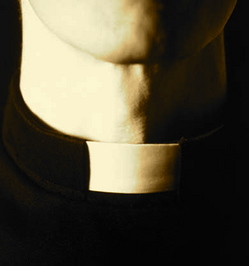Anyone who thinks the media has been treating the Church fairly over the last few weeks should take a moment to read what Sr. Mary Ann Walsh has to say in today’s Washington Post:
Some quarters of the media in the past few weeks seem to have a difficulty in getting stories right and fair. Fact-checkers and skeptical editors may have gone the way of dinosaurs. Some media appear to cite people for inflammability and absurdity, not knowledge. At times it seems that bias abounds, libel runs freely, and scrutiny lies by the side of the road.
Example: The Washington Post ran an opinion piece on Palm Sunday by Irish singer Sinead O’Connor, whose claim to fame in the U.S. previously was for a Saturday Night Live performance 18 years ago when she ripped up a picture of Pope John Paul II. As the Washington Post’s theologian at the start of Holy Week, she declared that “all good Catholics … should avoid Mass.” The Web site of the same newspaper ran a vitriolic blog entry by atheist Richard Dawkins. The British scientist called the Catholic Church an “evil, corrupt organization” and a “rotten edifice” and spewed more of his anti-Catholic screed in, of all places, the On Faith section of the Washington Post-Newsweek blog. Neither Sinead O’Connor nor Richard Dawkins, while free with their opinions, seems an expert on Catholicism. They’re simply well-known. Given that editorial criterion, readers might worry that if cannibal Jeffrey Dahmer were still alive, the Post would hire him as a food critic.
MSNBC libeled the pope in Holy Week with a Web site headline – Pope describes touching boys: I went too far – which has since been removed. The headline was intended to grab attention – it did – but had not a shred of substantiation in the story it headed. Fellow media outlets, who rightly cry indignantly when they see plagiarism among their brethren, gave MSNBC a pass on the libel. MSNBC dropped the headline and apologized after the Catholic League for Religious and Civil Rights made noise.
A main source for many media these days seems to be plaintiffs’ attorneys, who distribute old material they’ve “found” in the discovery process. Plaintiffs’ lawyers speak of “secret” documents, more properly called “confidential,” and offer their own interpretation of the materials as well as church motivation in drafting them. Media with a frightening naiveté report on these materials as if the plaintiffs’ lawyers constitute a new Oracle of Delphi. On Wednesday of Holy Week AP reported as “breaking news,” a 1963 letter “obtained by the Associated Press” about pedophilia that was sent to Pope Paul VI by Father Gerald Fitzgerald, who headed a now-closed treatment center in New Mexico. What took AP so long? Father Fitzgerald’s letters were reported in The New York Times a year ago. The story didn’t take hold then, but with nothing better to use to keep their story going, plaintiffs’ attorneys recycled the documents and AP thought it had the scoop of the year.
There’s a lot to be reported on child sexual abuse. It’s a sin and a crime and more prevalent in society than anyone ever dreamed before the 21st century. Some organizations, such as the Catholic Church in the United States, have made massive efforts to deal with it. People are learning how to spot abusers. The Catholic Church has educated more than two million people to do so. Children are learning how to protect themselves. The Catholic Church has educated more than five million children in this regard. There are lots of stories there. But such stories take time to report and plaintiffs’ attorneys make no money promoting them. And that, at least for now, isn’t news.

